By: Maddie Mott
Wound healing (healing hand therapy) involves a complex series of interactions between different cell types, cytokine mediators, and the extracellular matrix with its four basic stages including hemostasis, inflammation, proliferation, and remodeling (Mackay & Miller, 2003). Because successful wound healing requires adequate blood and nutrients to be supplied to the site of damage, the overall health and nutritional status of our patients directly influence the outcomes of their tissues healing or their tissues becoming permanently damaged. Wound repair must occur in a physiologic environment that supports tissue repair with studies showing that a diet deficient in protein, vitamins, and minerals can lead to poor wound healing (Mackay & Miller, 2003). Additionally, studies have found that maintaining an adequate intake of protein is especially important as it is used to build, maintain, and repair body tissues (Cleveland Clinic, 2017).
As healthcare practitioners, it is important that we recognize when someone has a wound or an infection that they will need additional protein, calories, and nutrients. We must also know relevant food sources which provide those nutrients. In a nutshell, healthy eating for wound healing includes choosing a wide variety of foods from each of the five food groups, consuming additional protein, and increasing energy intake (National Institutes of Health, n.d.). Some strategies to increase protein intake are by incorporating protein foods at each meal and as snacks. Furthermore, the amount of energy the body needs can increase when someone has a wound. Some strategies to increase energy levels could include keeping ready-to-eat meals and snacks handy at all times, eating smaller but more frequent meals throughout the day, and drinking fluids that provide energy such as milk, juice, or soft drinks rather than tea, coffee, and water (National Institutes of Health, n.d.).
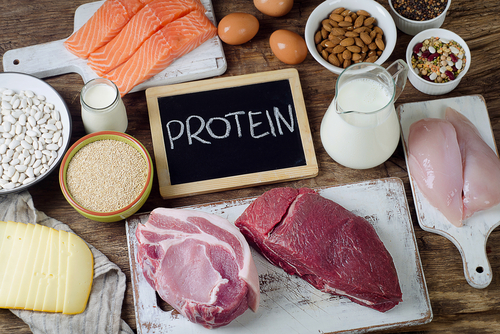
High Protein Foods Include:
• Meat, fish and chicken
• Eggs
• Dairy products (milk, cheese, yogurt)
• Beans, legumes, nuts and seeds
• Meat alternatives (tofu, vegetarian sausages)
You May Need Extra Energy If:
• You are underweight or you are losing weight without trying
• You are unable to eat enough due poor appetite or nausea
• You are recovering from trauma or surgery
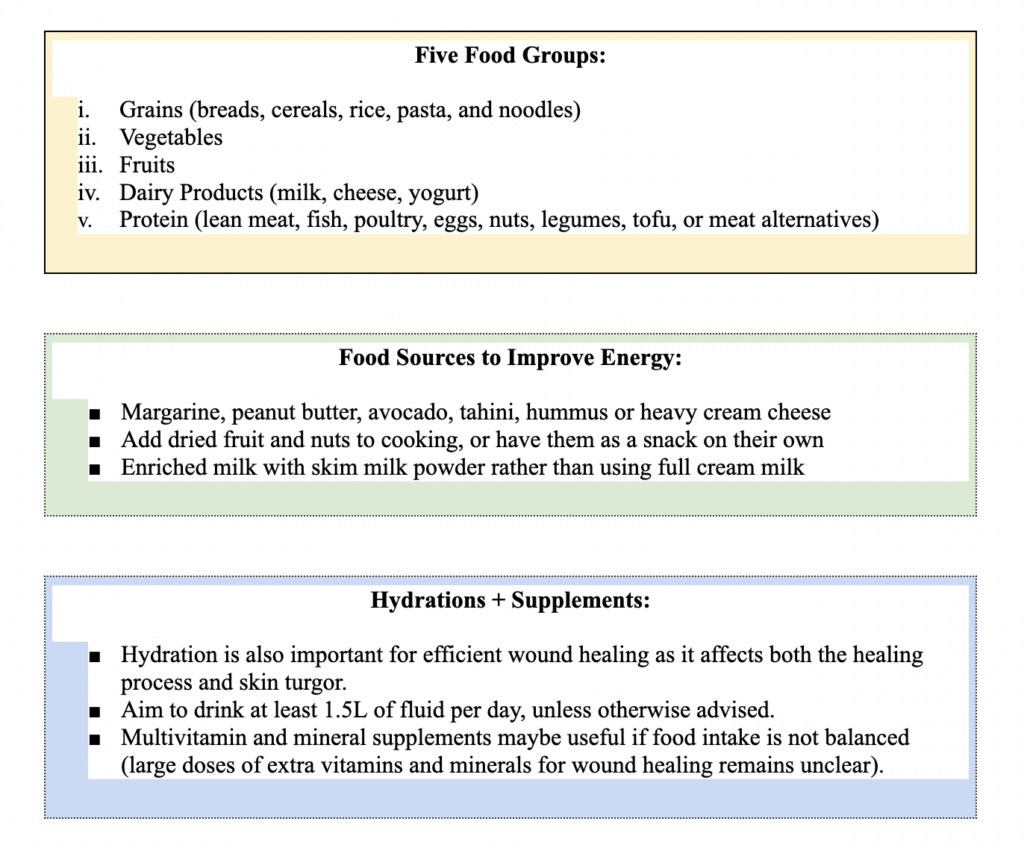
References
Eating well for wound healing – National Institutes of Health. (n.d.). Retrieved March 8, 2022, from https://www.nih.org/documents/Wound-Healing_Nutrition-2021.pdf
Mackay, D., & Miller, A. (2003, December). Nutritional support for wound healing: alternative medicine review. Journal of Clinical Therapeutic. Retrieved March 5, 2022, from https://www.researchgate.net/profile/Alan-Miller-3/publication/8977467_Nutritional_Support_for_Wound_Healing/links/5702a76c08aea09bb1a30144/Nutritional-Support-for-Wound-Healing.pdf
Nutrition tips to improve wound healing. Cleveland Clinic. (2017). Retrieved March 5, 2022, from https://my.clevelandclinic.org/health/articles/11111-nutrition-guidelines-to-improve-wound-healing
2 Comments
Leave a Comment
More To Read
Effects of different stretching techniques for improving joint range of motion.
Reference: Oba, K., Samukawa, M., Abe, Y., Suzuki, Y., Komatsuzaki, M., Kasahara, S., Ishida, T., & Tohyama, H. (2021). Effects of Intermittent and Continuous Static Stretching on Range of Motion and Musculotendinous Viscoelastic Properties Based on a Duration-Matched Protocol. International journal of environmental research and public health, 18(20), 10632. https://doi-org.libproxy.nau.edu/10.3390/ijerph182010632 The Skinny: This study used a cross-over…
Read MoreTest for Distal Radial Ulnar Joint of the Wrist
Ballottment Test for Wrist DRUJ Reliability and Validity Analysis of the Distal Radioulnar Joint Ballottement Test Nagashima, M., Omokawa, S., Hasegawa, H., Nakanishi, Y., Kawamura, K., & Tanaka, Y. (2024). Reliability and validity analysis of the distal radioulnar joint ballottement test. The Journal of Hand Surgery, 49(1), 15–22. https://doi.org/10.1016/j.jhsa.2023.10.006 The Skinny: Distal radioulnar joint (DRUJ)…
Read MoreOutcomes of Rigid Night Splinting and Activity Modification in the Treatment of Cubital Tunnel Syndrome
Shah, C. M., Calfee, R. P., Gelberman, R. H., & Goldfarb, C. A. (2013). Outcomes of rigid night splinting and activity modification in the treatment of cubital tunnel syndrome (night splint for cubital tunnel syndrome). The Journal of Hand Surgery, 38(6), 1125–1130.e1. https://doi.org/10.1016/j.jhsa.2013.02.039 By: Sophia Grimm The Skinny: The purpose of this study was to…
Read MorePeripheral nerve injury: A hand therapist’s assessment of sensory return.
Sensory return after a hand injury specifically a peripheral nerve injury After a peripheral nerve injury, there are often times impairments in sensory function and/or motor function. The rate of recovery varies based on the degree of injury, the overall health of the patient, and the patient’s age. After an injury, it is important…
Read MoreSign-up to Get Updates Straight to Your Inbox!
Sign up with us and we will send you regular blog posts on everything hand therapy, notices every time we upload new videos and tutorials, along with handout, protocols, and other useful information.


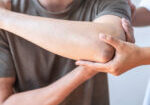
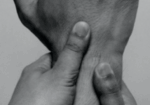

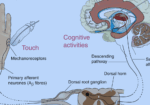

Very informative, well written and concise. Great topic.
Very informative and useful, we all should be cognizant of how nutrition affects healing.